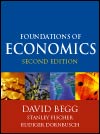

 Foundations of Economics, 2/e Market structure and imperfect competition Multiple Choice Quiz |

 2003 A McGraw-Hill Online Learning Centre
2003 A McGraw-Hill Online Learning CentreAny use is subject to the Terms of Use and Privacy Policy.
McGraw-Hill Education Europe is one of the many fine businesses of The McGraw-Hill Companies.